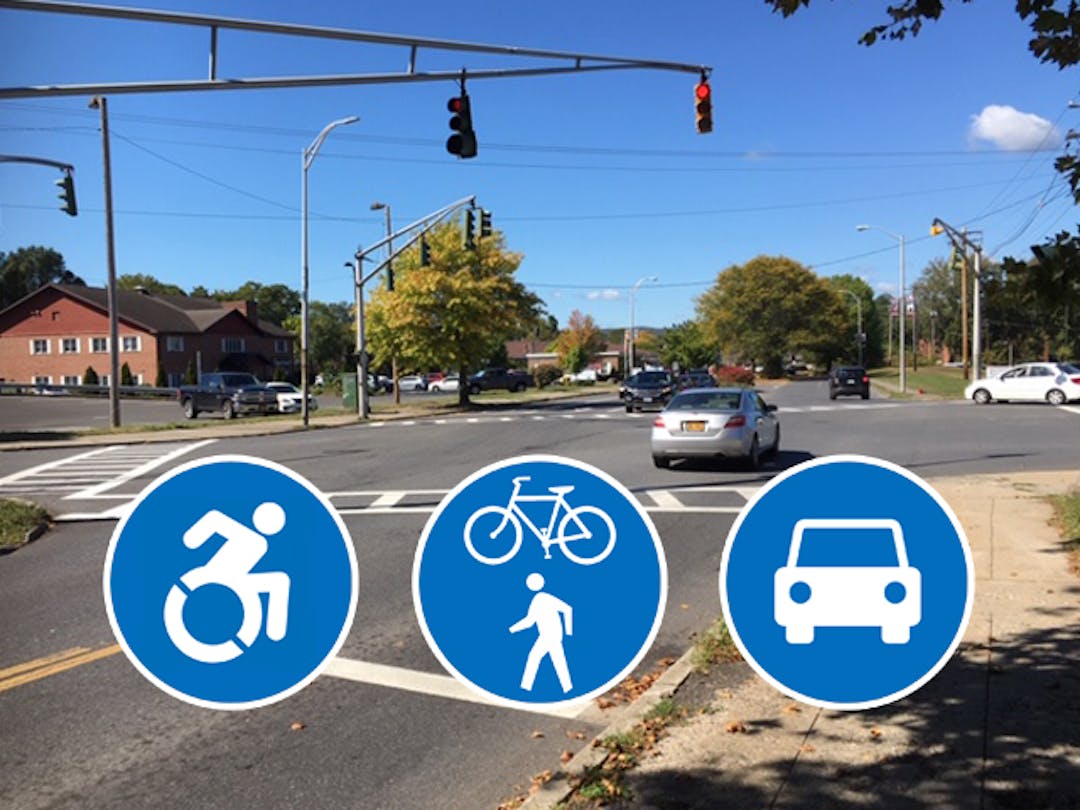Uptown Transportation Improvements
Consultation has concluded

Project Update 5/13/24: Final Plans posted! Tree removal was completed, along with test pits for underground utility locations. Look for site mobilization later this month, with construction planned to be completed by end of 2024.
Project Update 3/6/24: This Project is going to construction! The construction contract has been awarded to Argenio Bros of New Windsor, NY. Tree Removal is planned for March 2024, with full mobilization planned for May 2024. Additional updates will be provided as work begins.
Project Background: With funding provided by the Downtown Revitalization Initiative (DRI), administered by the NYS Department of State, the City will improve safety and traffic circulation on a route in Uptown Kingson / Stockade Business District.
The Uptown Transportation Improvements Project will address bicycle and pedestrian safety and access, capacity, and attract tourism, shopping, dining, and business activity to the Stockade District. It will also support the future connection between portions of the Kingston Greenline and advance complete streets across the City (see FAQs for more info).
The project is focused on improvements to Clinton Avenue between Westbrook Lane, Main/John Street, and Albany Avenue.
Work will include lane narrowing, sidewalk and curb ramp improvements, a new signal at the intersection of Clinton and Westbrook / John, signage, striping, landscaping, lighting, drainage and access management improvements.
Since early 2020, our Project Advisory Committee (PAC) has been assisting in the decision-making process about the design. The group provided a wide range of concerns and ideas and the City and HVEA conducted a traffic analysis to inform the development of design alternatives.
The City also partnered with Susan G. Blickstein, LLC, a transportation policy and public engagement firm, which developed two community surveys that were open from May 7 through June 15 2020. The surveys were designed to collect information about how community members travel along the routes, their perceptions about safety, and the preferred types of improvements they would like to see. Results of the public surveys are posted to the right.
The PAC and City staff considered eight different alternatives and narrowed those down to one priority recommendation. This alternative was presented in a virtual public meeting on November 19, 2020. Links to recordings of the presentation in English and in Spanish are also posted to the right.
Please add your comments to Share Your Thoughts below. Further information about our selection process can be found under Design Process. Public Comment was open on this project through September 1, 2023.
●●●
Schwenk Drive and Clinton Avenue FinalDesigns
To provide any comments and feedback for the design concepts of Schwenk Drive and Clinton Avenue, please go to the SHARE YOUR THOUGHTS tab.
SCHWENK DRIVE
A larger scope of work was initially planned for Schwenk Drive, however due to funding limitations, as well as the need to acquire right-of-way, including railroad tracks, the project scope on Schwenk Drive was reduced to including only signage and striping improvements at the intersection of Schwenk and Plaza Drive / Fair Street Extension. The current non-functioning traffic signal will be removed. The final plan is shown below:
CLINTON AVENUE
Excerpts from the final plans are presented below:
1. Striping Plans, Clinton Avenue:
2. Signal Plans, Clinton at Albany (replacement signal)
3. Signal Plan, Clinton at John / Westbrook (new signal)
Please share your comments and feedback in the SHARE YOUR THOUGHTS tab. If you have a story that you want to share about Schwenk Drive and Clinton Ave. that you want to share, feel free to share below as well. Thank you!









